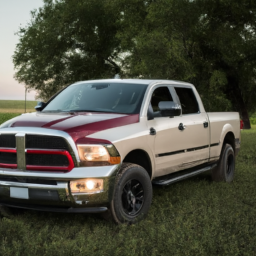
Repairing a transmission cooler on a Dodge RAM 1500 can be a detailed process. download manual more information here…..
- 2019+ Ram 1500 DT OBDGenie Demonstration Have a Question? *** Call: 321-250-3650 to Speak to a LIVE rep. Email: support@obdgenie.com WHO IS OBDGENIE.COM?
- Dodge ram clutch fan removal super easy!!! The fastest easiest way to remove a clutch fan on your dodge ram or just about any vehicle that has a water pump with a clutch fan …
Below is a comprehensive guide that includes the necessary components and steps to replace or repair the transmission cooler. This guide assumes you have basic mechanical skills and tools.
### Components Needed
1. **Transmission Cooler**: If the cooler is damaged, you will need a replacement unit.
2. **Transmission Cooler Lines**: these may also need to be replaced if they’re damaged or corroded.
3. **Transmission Fluid**: Ensure you have the correct type of transmission fluid for your RAM.
4. **Gaskets or Seals**: New O-rings or gaskets for the cooler connections.
5. **Hoses and Clamps**: If the hoses are worn, have replacements ready.
6. **Tools**:
– Ratchet and socket set (including extensions)
– Wrench set
– Screwdrivers (flathead and Phillips)
– Pliers
– Transmission fluid pump or funnel
– Drain pan
– Torque wrench
– Shop towels or rags
– Safety glasses and gloves
### Step-by-Step Repair Process
#### 1. **Preparation**
– **Safety First**: Park the vehicle on a flat surface, ensure it’s in park, and engage the parking brake. Wear safety glasses and gloves.
– **Disconnect the Battery**: Remove the negative terminal from the battery to prevent any electrical issues.
#### 2. **Drain the Transmission Fluid**
– **Locate the Drain Plug**: Underneath the transmission pan, find the drain plug (if equipped). If not, you may need to remove the transmission pan to drain the fluid.
– **Position a Drain Pan**: Place a drain pan beneath the transmission.
– **Remove the Plug**: Using the appropriate socket or wrench, remove the drain plug and allow the fluid to fully drain. If removing the pan, unbolt it and carefully separate it from the transmission.
#### 3. **Remove the old Transmission Cooler**
– **Locate the Cooler**: on a RAM 1500, the transmission cooler is typically located in front of the radiator.
– **Disconnect the Cooler Lines**: Use a wrench to loosen the fittings on the cooler lines connected to the transmission cooler. Be prepared for some fluid spillage; use shop towels to catch excess fluid.
– **Unbolt the Cooler**: Remove any mounting brackets or bolts that secure the cooler to the frame or radiator support. Carefully take out the cooler.
#### 4. **Install the New Transmission Cooler**
– **Position the New Cooler**: Place the new cooler in the same position as the old one.
– **Secure the Cooler**: Bolt the cooler back into place using the original mounting points. Follow any torque specifications provided by the manufacturer.
– **Reconnect the Cooler Lines**: Attach the cooler lines to the new cooler. Ensure that any O-rings or seals are in place to prevent leaks. Tighten the fittings securely but do not overtighten.
#### 5. **Replace Any Damaged Hoses**
– If any of the hoses are cracked or worn, remove them and replace them with new hoses. Use clamps to secure the hoses in place.
#### 6. **Refill Transmission Fluid**
– **Reattach the Transmission Pan**: If you removed the pan, now is the time to reattach it. Ensure that you have a new gasket and tighten the bolts in a crisscross pattern to ensure even pressure.
and tighten the bolts in a crisscross pattern to ensure even pressure.
– **Add New Transmission Fluid**: Using a funnel or fluid pump, refill the transmission with the recommended type and amount of transmission fluid. Check your owner’s manual for specifications.
#### 7. **Check for Leaks**
– **Reconnect the Battery**: Reattach the negative battery terminal.
– **Start the Engine**: Allow the engine to run for a few minutes. Shift through all the gears with your foot on the brake to circulate the fluid.
– **Inspect for Leaks**: While the engine is running, check the cooler connections and hoses for any signs of leaks. If you find any, tighten the connections as needed.
#### 8. **Test Drive**
– After ensuring there are no leaks, take the vehicle for a short test drive. Monitor the transmission’s operation and check again for leaks upon returning.
### Conclusion
Repairing a transmission cooler on a Dodge RAM 1500 involves several steps, including draining the fluid, removing the old cooler, installing a new one, and refilling the transmission fluid. It’s crucial to ensure all connections are secure and to check for leaks after the repair. If you encounter any issues during the process, consult a professional mechanic for assistance.
The brake proportioning valve is a crucial component in a vehicle’s braking system, designed to optimize the distribution of hydraulic pressure between the front and rear brakes. This valve plays a vital role in maintaining vehicle stability and safety during braking, particularly in situations where weight distribution shifts, such as during hard stops or when driving on uneven surfaces.
In a typical braking system, the front brakes usually handle a larger share of the braking force due to the vehicle’s weight shifting forward. However, if too much pressure is applied to the rear brakes, it can lead to rear-wheel lockup, resulting in a loss of control and potential skidding. The brake proportioning valve addresses this issue by regulating the amount of brake fluid that reaches the rear brakes, ensuring they do not engage too aggressively compared to the front brakes.
Typically, the valve operates based on the pressure applied to the brake pedal and the dynamics of the vehicle. It may include a spring-loaded mechanism or a more advanced electronic control system in modern vehicles. Some proportioning valves are adjustable, allowing for fine-tuning based on specific driving conditions or modifications to the vehicle. Overall, the brake proportioning valve is essential for enhancing braking efficiency, promoting even wear on brake components, and improving overall safety on the road.